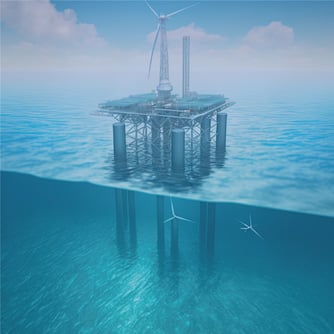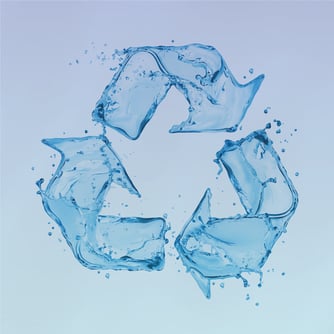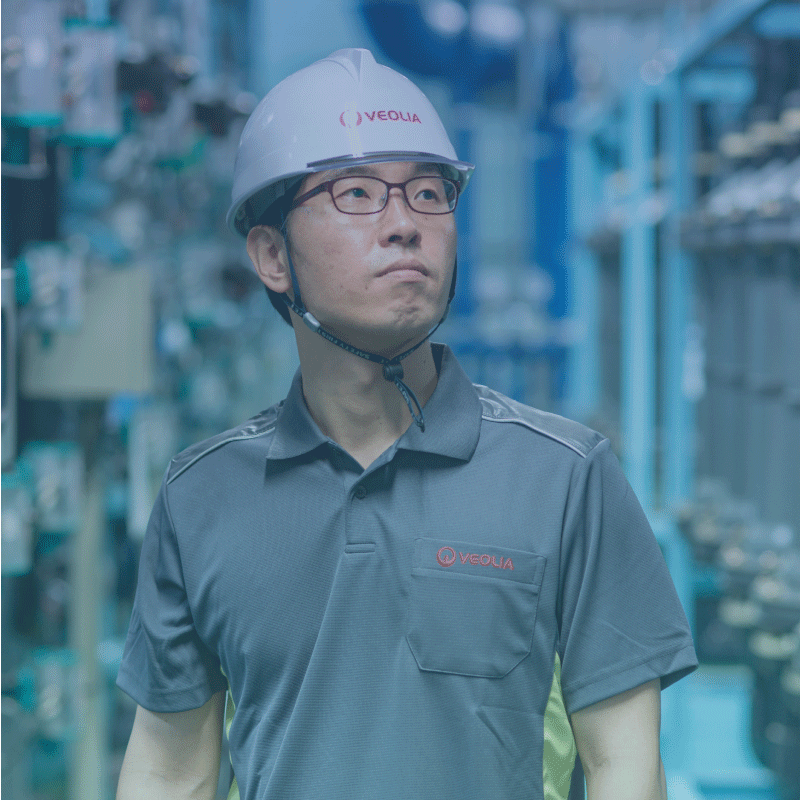Infographic: Water Sources
Download our infographic to learn about the treatable water sources and the required technologies we utilise for green hydrogen production.
Download NowWater sourcing and treatment plays a huge part in the cost-effectiveness of hydrogen production. High-quality water creates efficiencies throughout the entire process.
To produce hydrogen from electrolysis, you need plenty of purified water. A 100MW plant needs about 20m3/h of deionised water and about 60m3/h of make-up water (if cooling towers are used). Every production site must therefore have a reliable water source and the means to purify it.

Green hydrogen production can use many water sources. Whilst mains water might seem like the easiest method, it can often be more cost-effective to use volumes of surface water, seawater, or groundwater. Even wastewater. This early water source decision is key. When perfected, you invest in technology that serves you efficiently for years.
Pure water is essential for hydrogen production. Without it, you risk equipment failure and poor performance. For this reason, Veolia Water Technologies works closely with electrolyser manufacturers and hydrogen producers, creating efficient water treatment plants to feed their water source into.
Electrolysers are one of the most expensive aspects of green hydrogen production. Poor water quality can affect them in several costly ways. When water carries pollutants into the electrolyser cells, it causes damage over time. This leads to downtime when repairs become necessary.
More concerning is the risk to electrolyser cell service life. When poor-quality water shortens this by a few years, production costs are higher than expected. Poor quality water lowers electrolyser productivity. It can also inflate energy consumption to produce the same amount of hydrogen. This presents yet another avoidable cost challenge to your production process.

With the right technology in place, you can recover water from cooling tower blowdown and other process streams. This is our water re-use concept. Instead of discharging, divert it for purity treatment before use for hydrogen production. In this way, you reduce overall water intake and positively address your industrial wastewater management. Both issues help to reduce the overall cost of hydrogen production.
Oxygen emitted from electrolysis can also be used within the water treatment process, as can the thermal heat generated. By using hydrogen production byproducts within your operations, you create a more sustainable process whilst minimising your cost per kilo of hydrogen produced.
From water source choice to treatment plant installation and maintenance, your decisions impact the balance between capital and operational expenditure. You might choose a method that requires high capital expenditure with the benefit of lower operating costs in the years ahead. A thermal solution, for example. This could be the case for a remote location, such as an offshore plant, where maintenance provision would be more expensive. Or your location might endure expensive electricity. In this situation, you want to reduce operational costs.
Also, consider how you could save by using wastewater or seawater as your source instead of mains water. Investing in an effective treatment plant in the short term, you’d reduce operating costs every year. When it comes to water costs for green hydrogen production, Veolia helps organisations find the right balance between CAPEX and OPEX.

Download our infographic to learn about the treatable water sources and the required technologies we utilise for green hydrogen production.
Download NowOur team of experts are on hand and waiting to discuss your requirements for project.
Contact an expert